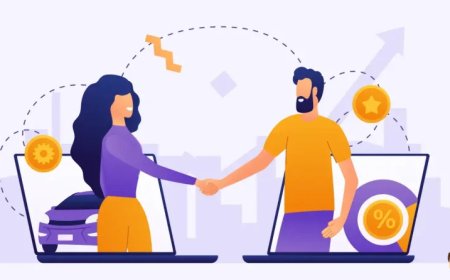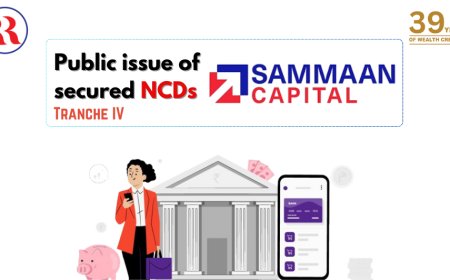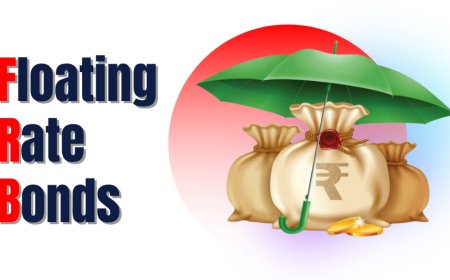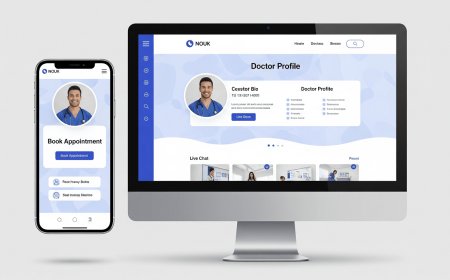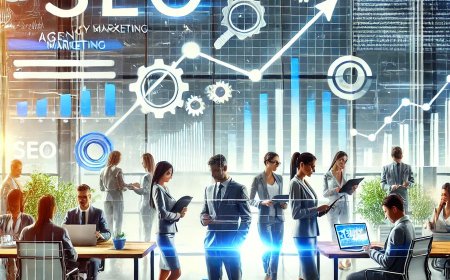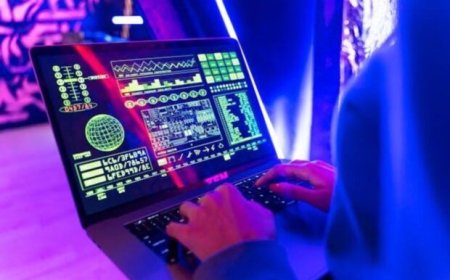Best Strategies to Hire Skilled Mobile App Developers in 2025
The mobile app industry is booming harder than ever in 2025. From AI-integrated platforms to augmented reality shopping experiences, mobile apps are no longer just digital tools—they're business lifelines. But here’s the real challenge: hiring skilled mobile app developers who can bring your futuristic ideas to life without breaking your budget or your spirit.
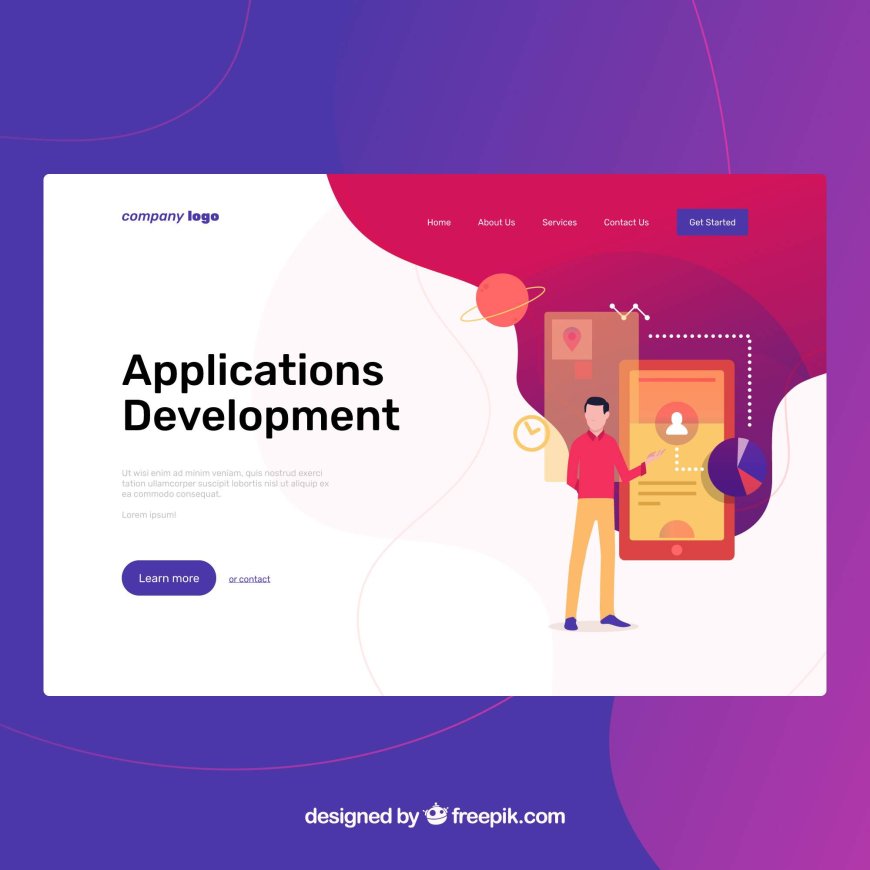
Introduction
The mobile app industry is booming harder than ever in 2025. From AI-integrated platforms to augmented reality shopping experiences, mobile apps are no longer just digital toolsthey're business lifelines. But heres the real challenge: hiring skilled mobile app developers who can bring your futuristic ideas to life without breaking your budget or your spirit.
The days of hiring just any developer are gone. Today, its about finding the right fitsomeone who not only understands code but also aligns with your business vision, works well remotely, and stays ahead of tech trends. The competition for top-tier developers is fierce, and mistakes in hiring can lead to months of delays, poor user experience, and wasted investment.
So, how do you ensure that youre making the smartest hiring decision in 2025? This article reveals proven strategiesupdated for this yearto help you hire skilled, reliable, and forward-thinking mobile app developers for your next big project.
Define Your App Goals Clearly
Before you even begin searching for developers, get ultra-clear on what you're building, why you're building it, and who it's for. Youd be surprised how many founders and project managers skip this step and end up hiring the wrong talent for the wrong job.
Identifying Your Apps Purpose
Ask yourself:
- What problem does this app solve?
- Is it utility-based, entertainment-focused, or business-driven?
- Is it customer-facing, employee-facing, or marketplace-based?
Your apps purpose will influence:
- The features you need
- The tech stack required
- The type of developer that fits your needs
Key Features and Functionality Requirements
List the core features of your app. Be specific:
- Do you need in-app payments?
- Will it use AI, AR, or blockchain?
- Will it require GPS, a camera, or real-time messaging?
By outlining features, you can pinpoint whether you need a generalist or a specialist.
Pro Tip: Split features into must-haves vs. nice-to-haves. Developers will give more accurate estimates, and you can control scope creep.
Short-Term and Long-Term Scalability Plans
Dont just think MVP. Ask:
- Whats your 6-month roadmap?
- Will your app need to handle thousands of users or just a niche community?
- Are you planning international expansion?
Scalability affects your hiring. Developers experienced with scalable architecture (e.g., microservices, containerization) are different from those who focus on lightweight MVPs.
Choose the Right Development Approach
Your tech stack isnt just a technical decisionit directly affects who you hire.
Native, Hybrid, or Cross-Platform
In 2025, the lines between these development approaches are more defined than ever.
- Native Development (Swift for iOS, Kotlin for Android): Offers best performance and UX, ideal for resource-intensive or OS-specific apps.
- Cross-Platform Development (Flutter, React Native, Kotlin Multiplatform): Popular choice for startups and mid-sized projects; fast and cost-effective.
- Hybrid Development (Ionic, Cordova): Losing favor but still viable for content-driven apps and internal tools.
Matching Your App Strategy with Developer Skillsets
If you decide to go native, youll need two different developers or a team: one for iOS and one for Android. For cross-platform, a single skilled Flutter or React Native developer might suffice.
Know what youre building before you hire, so you hire the right skill set.
How the Development Approach Affects Hiring
- Native = More specialization = Higher cost
- Cross-platform = Faster hiring pool = Lower cost
- Hybrid = Niche market = Lower demand, but also fewer experts
Note: Developers often label themselves as "mobile app developers" even if they only know one approach. Always confirm their tech stack experience.
Determine the Type of Developer You Need
2025 is the year of flexible talent sourcing. Remote work, global hiring, and contract-based development are the norm.
Freelancers
Best for:
- MVPs
- Small projects
- One-off features
Pros:
- Cost-effective
- Flexible hours
- Easy to scale up or down
Cons:
- Limited scalability
- Hard to manage without project oversight
- Varying levels of reliability
In-House Developers
Best for:
- Long-term product development
- Continuous updates and iterations
Pros:
- Full-time commitment
- Deep product understanding
- Instant collaboration
Cons:
- High cost (salary, benefits, workspace)
- Longer hiring cycles
- Difficult to scale or replace
Agencies
Best for:
- Complex apps with diverse needs
- Projects needing full-service (design, dev, QA, PM)
Pros:
- Full team available
- Structured process
- Accountability
Cons:
- Higher cost
- Less flexibility
- May lack startup culture understanding
2025 Strategy: Start with freelancers or agencies for MVP, then transition to an in-house team as your product grows.
Set a Realistic Budget for Your App
Costs are rising in 2025, especially for top-tier talent. Be honest about what you can affordand know what those dollars buy you.
2025 Cost Benchmarks
Project TypeEstimated Budget (USD)
Basic MVP (cross-platform) $8,000 $25,000
Mid-level app (e-commerce, SaaS) $25,000 $75,000
Complex app (AI, AR, Fintech) $75,000 $200,000+
Balancing Quality and Cost
- Dont go cheapyoull pay more later in bug fixes and rewrites.
- Avoid overpaying for brand name agencies if a smaller team fits your needs.
Pro Tip: Focus on the developers problem-solving and communication skills. A $30/hr developer who understands your goals is more valuable than a $100/hr coder who needs micromanagement.
Avoiding Hidden Expenses
- Backend and hosting
- Third-party APIs and licenses
- Maintenance and updates
- App Store fees
Ask for a detailed estimate with breakdownsnot just a ballpark number.
Where to Find Top Mobile App Developers in 2025
In 2025, the digital hiring landscape will have evolved drastically. While platforms like Upwork and Toptal are still around, new AI-driven networks and niche communities have emerged. Knowing where to look can be just as important as knowing who to hire.
Updated List of Best Platforms
Here are the top places to find skilled mobile app developers in 2025:
- Toptal Still the gold standard for top 3% vetted talent. Ideal for mission-critical or high-complexity apps.
- Upwork Great for finding freelancers and agencies with verified reviews and transparent pricing.
- Lemon.io A rising star with pre-vetted developers focused on startups.
- Arc.dev Connects you with remote developers, including full-time candidates.
- YouTeam Perfect for finding dedicated remote development teams.
- Dribbble/Behance Not just for designers; many full-stack mobile developers showcase their portfolios here.
- LinkedIn & GitHub Direct outreach works better in 2025 with AI tools that help personalize your messages.
- X (formerly Twitter) Communities & Reddit Great for spotting rising stars and getting real peer reviews.
Utilizing Social Media and Niche Communities
Don't underestimate the power of communities. Developers are highly active on:
- Dev. to
- Indie Hackers
- Hacker News (Y Combinator)
- Reddit threads like r/freelance and r/forhire
- Discord developer communities
Engaging in these spaces lets you observe developer behavior, see how they think, and assess their communication skills in real-time.
Pros and Cons of Talent Marketplaces
Marketplace Type Pros Cons
General Freelance Sites: Broad talent pool, fast hires. Skill levels vary widely.
Curated Platforms Vetted developers, less risk, Higher rates, smaller pool
Niche Communities: Direct communication, passion-driven talent. Takes longer to find and vet candidates.
In 2025, hybrid sourcing works beststart with platforms, then dig deeper through networks and communities to find hidden gems.
Evaluate Developer Portfolios and Case Studies
Resumes dont tell the full story. In 2025, portfolios and real-world case studies are the new resumeand you should know exactly how to read them.
What to Look for in a 2025-Ready Developer
- Cross-platform fluency (Flutter, React Native, Kotlin Multiplatform)
- AI integration experience (Chatbots, machine learning)
- Innovative UI/UX work (animations, personalization)
- Cloud-native development (Firebase, AWS, Supabase)
- Security-first mindset (encryption, secure logins, compliance)
Indicators of Experience and Innovation
- Diversity of apps: A good sign that they can adapt to different industries.
- Growth stories: Did they scale an app from 1K to 100K users?
- Revenue-generating apps: Shows they understand business impact.
- Contributions to open-source: Suggests they love what they do.
Ask for links to live apps on app stores. Try them yourself. Are they smooth? Fast? Bug-free?
Red Flags to Avoid
- No links to published apps
- All work is under NDAs with no proof
- Weak descriptions like worked on UI without detail
- Unrealistic or vague timelines on projects
Pro Tip: Look for developers who tell a story with each projectwhat problem they solved, how they solved it, and what the outcome was.
Conduct Effective Interviews
Youve got your shortlist. Now its time to get personal. In 2025, interviews are more about real-world thinking and communication than just ticking off skills.
Must-Ask Questions in 2025
- Whats your process from app idea to deployment?
- How do you handle changing requirements or scope creep?
- How have you implemented AI or machine learning in past apps?
- Can you walk me through a project that went off-track and how you fixed it?
- What app development trends do you think are overrated?
These questions test more than techthey test initiative, problem-solving, and adaptability.
Testing Technical and Soft Skills
Technical skills you should check:
- API integration
- Performance optimization
- Code architecture
- Cross-platform or native development expertise
Soft skills to assess:
- Time management
- Openness to feedback
- Clarity in communication
- Curiosity and adaptability
Pro Tip: Dont just ask what tools they useask why they prefer them.
How to Assess Remote Readiness
Remote-first is the default in 2025, so ensure your developer:
- Works well asynchronously
- Has a reliable setup (Wi-Fi, equipment, workspace)
- Uses tools like Slack, Notion, or ClickUp effectively
- Is responsive and proactive with communication
The best developers know how to collaborate even when you're not watching.
Prioritize Communication and Collaboration Tools
In 2025, strong communication is your secret weapon. Remote teams rely on a suite of tools to keep projects flowing. Before you hire, agree on which tools to useand how to use them.
Essential Tools for Remote Development
Heres a modern-day remote stack:
- Slack/Discord Instant messaging and group chats
- Notion/ClickUp Centralized task and documentation hub
- Jira/Trello Sprint management and progress tracking
- Zoom/Google Meet Standups, demos, and feedback sessions
- Figma/Zeplin Design collaboration and handoff
- GitHub/GitLab Code management and version control
If your developer isnt familiar with these or doesnt want to use them, thats a red flag.
Real-Time Tracking and Updates
Dont wait until the end of the week to ask for updates. Implement:
- Daily or weekly standups
- Live demo sessions after each milestone
- Access to active repositories and issue tracking
Importance of Timezone Alignment
In a global hiring landscape, timezone overlap is gold. Look for at least 34 hours of shared working time per day to allow real-time discussions, reviews, and emergencies.
Tools like World Time Buddy can help you plan collaboration windows.
Validate Skills with a Test Project
Even if a developer has glowing reviews and a strong portfolio, nothing beats seeing them in action. In 2025, a paid test project is the gold standard for evaluating real-world capability and compatibility.
Why a Small Test Task Is Essential
A test task helps you:
- Validate technical skills in your chosen tech stack
- Observe time management and attention to detail
- Gauge communication style and responsiveness
- Identify how they handle feedback and changes
Think of it as a first date with your developer before committing to the full project.
How to Structure a Paid Trial
- Keep it small: 1015 hours of work maximum.
- Align with your real project: Choose a feature or module that would eventually be part of the app (e.g., login screen, user profile, basic dashboard).
- Set a fixed budget: Agree on scope, deadline, and deliverables.
- Provide clear specs: Even for a test, document what you expect.
What to Expect from a Pilot Project
Youre not just testing whether the code worksyoure assessing the full experience. Pay attention to:
- Quality of code and structure
- Timeliness of delivery
- Communication and questions asked.
- Creative input and suggestions
- Documentation and handover
If they deliver great work and handle the process like a pro, youve likely found your developer.
Draft a Solid Contract and NDA
Youve found your developernow its time to make it official. In 2025, legal protection and clarity are more important than ever due to increasing concerns around data privacy, IP theft, and remote disputes.
Key Contract Components in 2025
- Scope of work: What exactly will be delivered and when?
- Timeline and milestones: Break the project into phases.
- Payment structure: Fixed-price or hourly, milestone-based payouts.
- Ownership: Make sure you own the code, designs, and assets.
- Termination clause: What happens if things go south?
- Revision policy: How many edits are included per milestone?
Keep your contract jargon-free but legally binding. Use e-signature tools like DocuSign or HelloSign for convenience.
Ownership Rights and Data Privacy
Be explicit: once the project is complete and paid for, you own all deliverables, including:
- Source code
- Wireframes and designs
- App store listings
- Backend configurations
Also, make sure GDPR, CCPA, or any relevant data protection regulations are acknowledged in writing, especially if your app handles user data.
Payment Structure and Deadlines
Avoid full upfront payments. Instead, use milestone-based payments:
- 30% upfront (commitment)
- 40% mid-project (working prototype or beta)
- 30% on final delivery (after successful testing)
Use platforms like Escrow.com, Payoneer, or Upworks escrow to protect both parties.
Focus on Post-Launch Support and Maintenance
Too many businesses focus only on the launch and ignore what happens after. In reality, post-launch is where the real work begins.
Importance of Ongoing Developer Availability
Bugs will happen. User feedback will flood in. OS updates will break features.
You need a developer who doesnt vanish after payday.
Look for developers who:
- Offer 3090 days of free post-launch support
- Are available for long-term contracts or retainer models
- Proactively suggest updates or improvements
Creating a Long-Term Engagement Strategy
Discuss:
- Monthly maintenance retainers
- Hourly support packages
- Scheduled update cycles
- Crash and performance monitoring tools
Having your developer on call ensures faster resolution of issues and peace of mind.
Questions to Ask Before Signing
- Do you offer ongoing support? If so, how is it structured?
- How do you handle OS updates and breaking changes?
- Are you available for future features and iterations?
- Do you monitor analytics or performance post-launch?
The best developers act as partners, not just vendors.
Leverage AI in Hiring Decisions
2025 is seeing a huge shift in how companies source, screen, and match talent, thanks to AI. Using the latest tools can save you time, reduce bias, and improve your hiring decisions.
AI-Powered Hiring Platforms in 2025
New platforms are revolutionizing how we hire developers:
- HireVue Uses AI to analyze interviews and assess soft skills.
- TuringSmart matches remote developers with startups based on project scope.
- Breezy HR Tracks candidate progress with AI-powered scoring.
- PandaScore AI Analyzes GitHub and Stack Overflow data for code quality indicators.
These tools can help you:
- Identify candidates with a high match rate to your project
- Screen for soft skills like communication and problem-solving
- Predict retention and success rate
Using Machine Learning to Screen Candidates
Instead of spending hours reading resumes, let AI shortlist applicants based on:
- Skillset match
- Past project similarity
- Client feedback trends
- Activity on GitHub and Stack Overflow
AI doesnt replace your judgmentit enhances it by filtering noise.
Smart Matching for Skill and Culture Fit
Some tools now assess cultural fit using behavioral data, preferred work style, and personality tests. This matters more in remote environments where collaboration relies on trust and alignment.
Combine tech with your gut. Let AI handle the sorting. You focus on the final decision.
Build a Hiring Funnel and Talent Pipeline
The best hiring strategies in 2025 dont start with a job postthey start months earlier with a solid pipeline. Even if you dont need a developer right now, building relationships pays off later.
How to Create a Continuous Talent Pipeline
- Stay active in developer communities
- Attend tech events, webinars, and virtual hackathons
- Maintain a developer Rolodex of past candidates
- Use LinkedIn and GitHub stars/forks to identify potential hires
Keep a list of people Id hire in a heartbeat for future projects.
Retaining Developers for Future Projects
If you find a great freelancer or team, dont let them go. Offer:
- Retainers
- Revenue-sharing models
- Bonuses for performance or early delivery
This builds loyalty and reduces the friction of rehiring for future iterations.
Community Engagement and Networking Tips
- Host AMAs or panels on Reddit or Discord
- Share your app development journey
- Feature your developers publicly (great for them and your brand)
- Give feedback to those who applied, even if you didnt hire them
The more you give to the community, the more talent youll attract.
Conclusion
Hiring a skilled mobile app developer in 2025 is both an art and a science. The talent is out there, but finding the right developer requires clarity, strategy, and a willingness to invest in the process.
From setting clear goals and choosing the right development approach to leveraging AI tools and vetting through test projects, every step matters. Whether you're building a simple MVP or a full-scale enterprise solution, following these strategies ensures you dont just build an appyou build a product that users love.
Take your time, trust the process, and prioritize communication, scalability, and long-term support. Because in 2025, hiring the right developer isnt just about launching an appits about launching a successful business.
FAQs
1. Whats the most cost-effective way to hire a mobile app developer in 2025?
Hiring a freelancer or small agency for your MVP is often the most cost-effective option. Use platforms like Upwork or Toptal, and start with a test project to evaluate compatibility.
2. How do I verify a developers skills without technical knowledge?
Use a paid test project, review their app store submissions, ask for case studies, or involve a technical consultant to help during the interview phase.
3. Whats a typical timeline to build an app in 2025?
Basic apps take 23 months. Mid-level apps take 46 months, and complex, enterprise-level apps may take 612 months or longer.
4. Should I hire locally or go remote in 2025?
Remote is the norm in 2025. It allows you to access a global talent pool, often at lower costs. Just ensure good timezone overlap and communication tools.
5. What should I include in a mobile app developer contract?
Key items: scope of work, timelines, payment milestones, IP ownership, revision terms, support/maintenance clauses, and termination rights.















